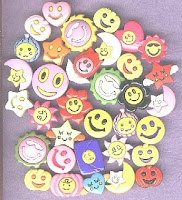
It is interesting to note the changes over the years, in the vehicle known as the bicycle. This evolved from the oldest form called a velocipede consisting of 2 or 3 wheels. It was propelled by the rider sitting astride and peddling the machine forward with a geared treadle connected by a chain to gears in the axle of rear wheel. This form of vehicle dates from the earliest part of the 19th Century. One of the oldest had 2 wheels of nearly equal size, placed one in front of the other. Others had a very large wheel in front and a small one in the rear. These had a treadle or a crank on axle of the front wheel for propulsion. The term of velocipede was soon changed to bicycle.
Other types of pedaled vehicles were known as tricycles because of the 3rd wheel added. One wheel was placed in front and 2 in rear or reversed. There is a unicycle made with only 1 wheel, used mostly by trick riders. One vehicle, also called a tricycle was a coach with 1 wheel in front and 2 in rear. It was pulled by 2 horses and as many as 20 people could ride.
In olden days, bicycling parties were a delightful form of entertainment.
Cycling was more than a sport, it was a mode of needed transportation.
The cost was high - from $100 to $150 and that was a lot of money then.
There were 7573 patents issued up to 1900 for bicycles or parts.
A man named Albert Pope was known as the father of the bicycle.
The so called "Boneshaker Bicycle" was used about 1866. It is depicted on a button with an English Registry mark dated July 2, 1869. Many buttons were made showing different types of bicycles some with riders and some without riders. One shows a "Bloomer Lady" with her cycling costume, typical of the 1849 - 1950 era. Cord coats were made for cycling. Other types of costumes adapted to riding were the divided skirt, culottes and pedal pushers.
Buttons with bicycles are found in many materials including composition, rubber, pearl, black and colored glass. Also, metals, enamels, horn, underglass, and plastics. They show men and women riders and even such unlikely riders as cupids and birds. As the bicycle changes occurred so did the button makers designs, which helps to date the button.
With the growth of the Automobile Industry, the Bicycle Industry declined. However, during WW II people were encouraged to use bicycles to conserve gasoline. The Army used them in some units. The price was reasonable and the business boomed.
Some interesting stories are found in researching - one of a gold plated bicycle ridden by Lillian Russell. Traffic jams were caused as she rode on the streets.
In European, Asian and Scandinavian Countries, bicycles are much more widely used than in our Country. They are used not only as transportation for people but to move supplies and tools. Produce and all sorts of cargo are hauled. A friend told of seeing 2 painters with a pole on their shoulders, on which was suspended several buckets of paint and a bucket with brushes, seen riding on a busy street in Holland.
In China, a richshaw is used to transport people. Once pulled by a man running, now a bicycle is used.
In the past year bicycles with trailers have been seen, some with bed rolls and tents on them. One seen lately had a covered trailer with a small child snuggly seated inside.
It would be interesting to see how many buttons with bicycles could be found. Tricycles can be found on modern buttons and there are some realistics.
Clubs of Cyclers had buttons made for their coats as well as having pinback buttons made for sporting events.
When it's all said and done, the bicycle was a good invention, there really has not been much change - 1 wheel in the front and 1 wheel in the rear - and such great and wonderful things it has caused to be done.
written in 1988 by Irma Shoop
several issues of National Button Bulletins were used as references, as were Just Buttons Magazines
I collect bicycle buttons and these are a few of my extras..available under mixed materials @
Pegs Buttons






